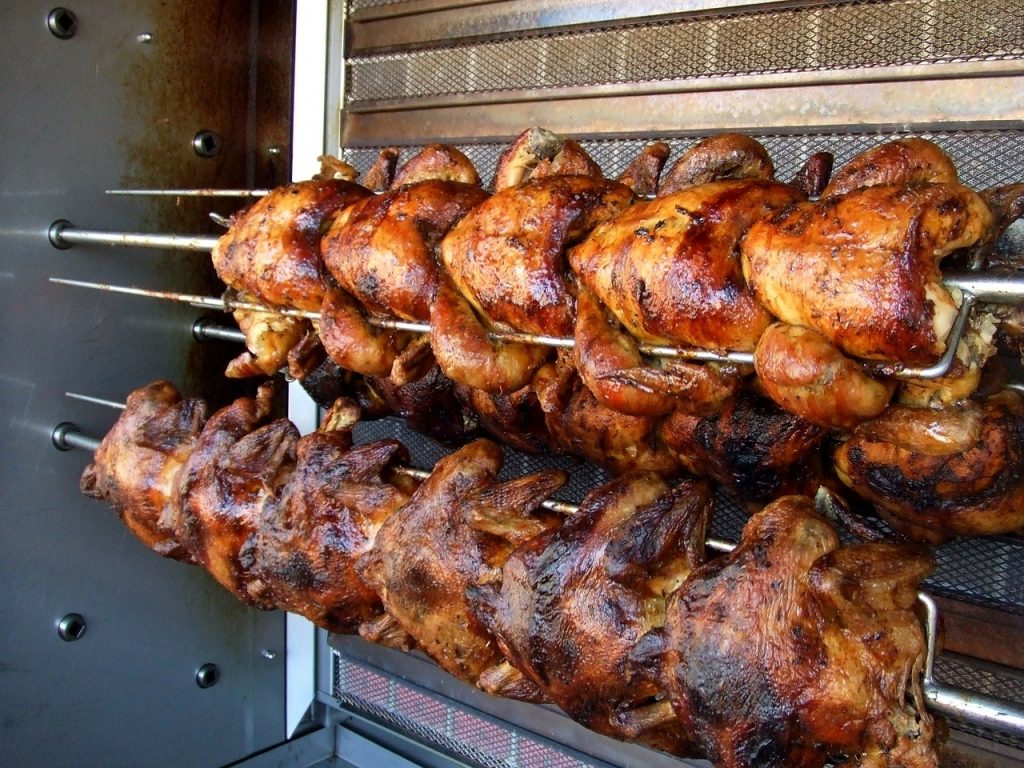Where You Can Still Buy Chicken At A Reasonable Price
Chicken prices have soared in recent months due to multiple factors, however, there are still two places where chicken is reasonable.
This article is more than 2 years old

Many of America’s necessities have gone up in price exponentially. Everything has been affected by inflation and an ongoing pandemic, from various ingredients to fuel to clothing. Chicken has been one of those food items in high demand that has received a substantial price bump. Fortunately, rotisserie whole chickens at BJ’s and Costco are still affordable for the average American family.
Overall, the cost for whole chickens has gone up by a whopping 16%. At Costco and BJ’s, rotisserie chickens still remain relatively cheap. Costco sells entire rotisserie chickens for $4.90, which are priced about the same at national BJ’s. A similar membership-only grocery store to Costco, Sam’s Club, has whole chickens for a few cents less than their market counterparts. At stores like Meijer, Giant Eagle, and Publix, buying an entire bird is a couple of bucks higher than Costco’s. Publix definitely has the most expensive rotisserie chicken out of the bunch, costing almost $8 for a single bird.
Keeping rotisserie chickens‘ costs as minimal as possible is a monetary need for most grocery stores. Substantial grocery stores like Costco rely on drawing customers in with cheap whole chickens, knowing that the shopper will likely buy other foods besides the rotisserie item for dinner. Companies are willing to risk losing money on entire chickens because having chickens available statistically attracts more customers and higher sales. While prices go up for other ingredients and items in grocery stores, markets can lower the cost of in-demand foods like whole chickens to keep customers happy and continually purchasing.
For stores like Costco and BJ’s, mismarking a chicken’s wholesale price could have devastating consequences for their business. There are certain items that customers fervently check for price increases, and rotisserie chicken, alongside milk and eggs, is one of them. The prices of these essential items can signal to a customer that a grocery store is too costly. This can lead to diminishing traffic and losing business. Keeping rotisserie chickens’ prices down is an essential part of retaining customers.
BJ’s CEO, Bob Eddy, explained this marketing tactic in a last week’s press statement. Keeping whole chickens in a bearable price range is “meaningful to our members,” Eddy stated. Maintaining a standard cost level for essential items strengthens customer loyalty, which businesses need right now. As prices continue to soar, companies must manage costs in a way that doesn’t hinder the average family’s grocery spending.
Costco has had a decade-long dedication to maintaining its rotisserie chicken price. For more than ten years, whole chickens have remained at $4.99 each. The cost decrease doesn’t diminish the company’s earnings since a hundred million birds are sold to families each year.
The grocery store also implements a spacial strategy for their roast chickens to keep customers buying more items. Costco puts rotisserie chickens all the way at the back of the store, ensuring that customers are picking up other products on their path to the birds. This strategy has continued to boost Costco’s general revenue each year, helping the company sustain its chickens’ extraordinarily low prices.



